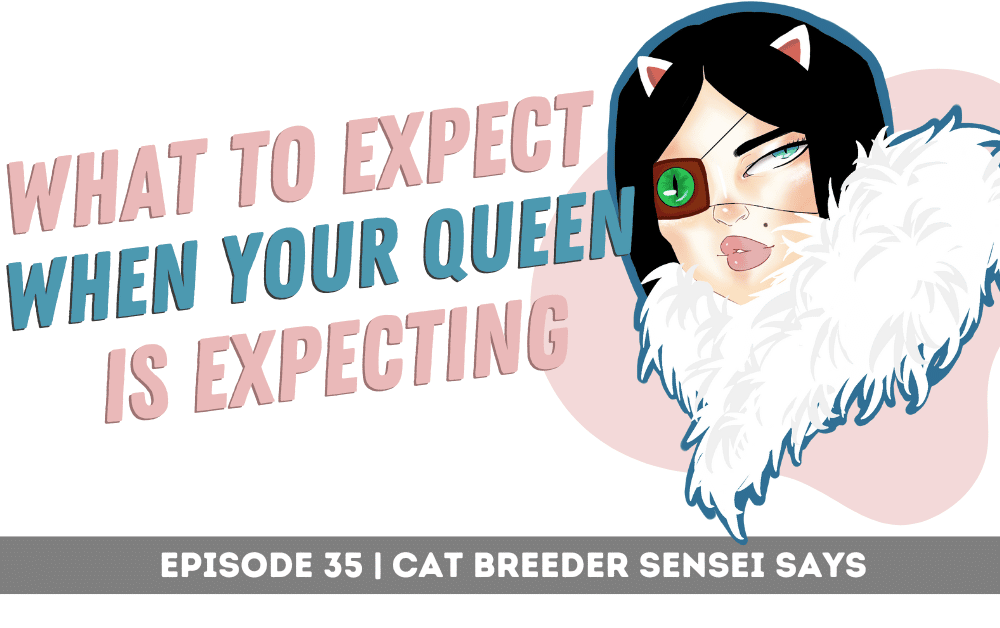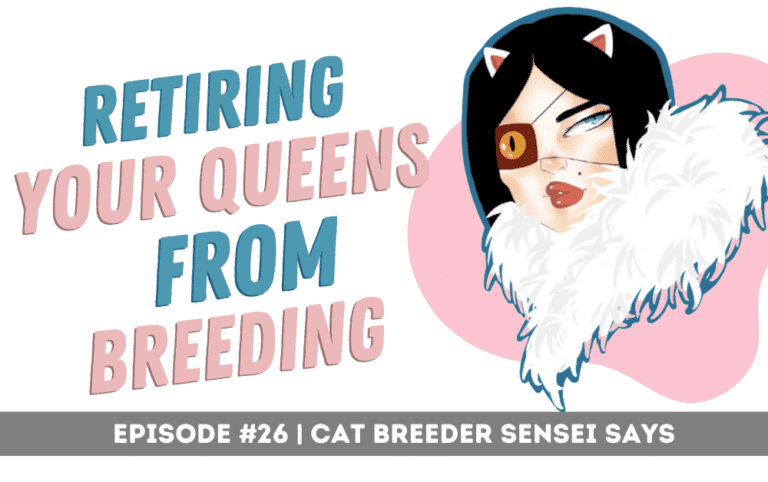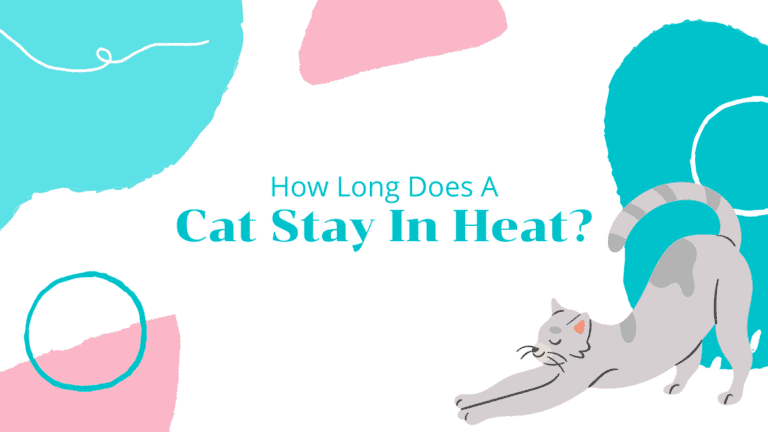What To Expect When Your Cat Is Expecting
During the exciting times when your cat is expecting, you might feel nervous at the idea of your cat going into labor. Be prepared by knowing the signs leading up to and during the delivery of her precious kittens. Preparation in advance is key to helping your cat have the smoothest possible delivery. Cats are quite independent and private in delivery, often able to give birth unsupported. However, you should watch quietly from a distance in case you need help or to call a vet. Listen to this podcast episode where we talk about what to expect when your cat is expecting.
Pregnant Cat Behavior Before Birth
The average gestation duration of a cat is normally between 63 and 65 days (nine weeks after fertilization). The week before delivery, you will find that your cat’s behavior and routine may change. She will start to search around for every nook and cranny in the house. She is looking for a safe place to birth her kittens. So providing a quiet, warm, and comfortable environment for your cat will help them feel at ease during the process.
It is a good idea to set up a kittening box; keep it in a warm and draft-free area, and this is critical as during the kitten’s first three weeks of their lives, they are unable to regulate their own temperature.
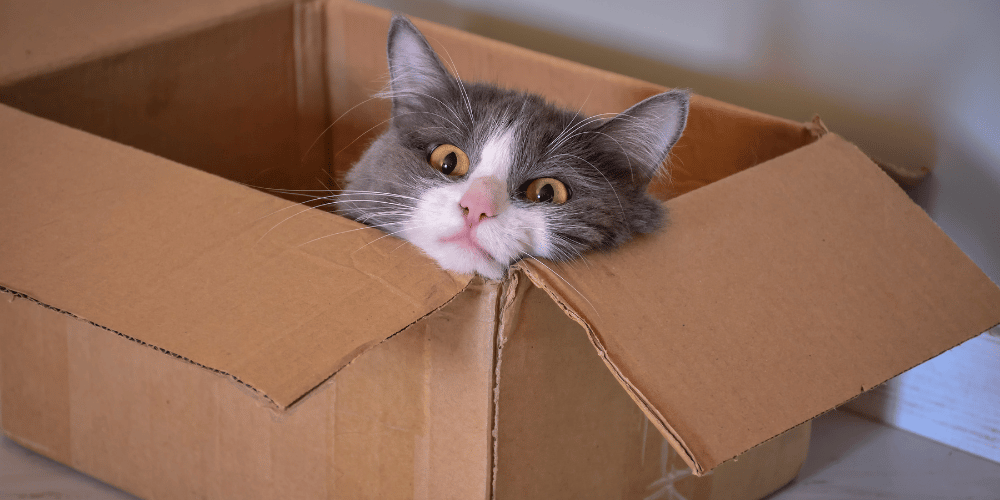
Moments before delivery- signs to watch out for
During the first stage of labor, her birth canal will relax and widen as her kittens start to turn around into the correct position for birth. After that, you will start to notice your cat’s behavior changing drastically. She will start to become very restless, frantically walking from one area to the other while becoming very vocal by meowing that can be occupied with groans.
Similar to humans, cats will go through several stages of labor. Refusing food 24 hours before birthing is typical, so don’t worry if she lacks interest in eating. The first stage can last anywhere between 6-12 hours on average, and if it’s your cat’s first time expecting, then don’t worry if it lasts up to 36 hours- this is normal.
As the hours progress, these meows may become more intense. Loud purring is also common. She may display signs of “nesting,” and this is when she scratches and paces around her kittening box. When you know she is about to deliver; you’ll notice that she will start settling down from her restless state.
How Long Does It Take A Cat To Deliver Kittens?
The average time for your cat to deliver all her kittens is up to 16 hours. This typically depends on how many kittens are present, if it is your cat’s first pregnancy (first-timers normally take a bit longer) and if there are any difficulties with the birth. For first-time cat mothers, it can take a considerably longer time for the first kitten to be born.
You will know when your cat is ready to give birth as she starts to undergo strong contractions as the kitten moves down the birth canal, and straining begins. This is when the second stage starts to commence. The birth of the first kitten should normally occur during the first 30 minutes when straining first occurs.
How To Help A Cat Deliver Kittens
Typically, it takes around three pushes for the delivery of each kitten, and the kitten’s water bag is visible at the vulva. This will burst, and your cat will clean up most of this liquid and tear/lick the membrane from the kitten’s face, which helps stimulate breathing. Although it is unnecessary to intervene in anything during the process, if you notice that your cat doesn’t remove the membrane from the kitten’s mouth and nose, you should step in and do this for her.
You should follow up by carefully and gently rubbing the kitten with a soft towel, as this will stimulate breathing in the kitten. The subsequent kittens should follow in approximately 15 minutes to one-hour intervals. However, interrupted labor can happen when your cat stops straining and starts nursing the kittens already born or to rest.
The final third stage involves the delivery of the afterbirth and often occurs in between the delivery of each kitten. The afterbirth consists of the placenta and other fetal membranes. Although, sometimes, the kittens are delivered very quickly, don’t worry if it seems like stage three labor has been delayed.
After delivery, your cat will chew the umbilical cord in two, and eating the placenta is common. You will have to do this for her if she doesn’t chew the umbilical cord. You mustn’t pull on the umbilical cord as this could result in an umbilical hernia. Kittens should crawl toward the mother’s nipple and begin to nurse- this helps stimulate the uterus to contract. If the kitten doesn’t move to nurse, you should carefully place the kitten in position.
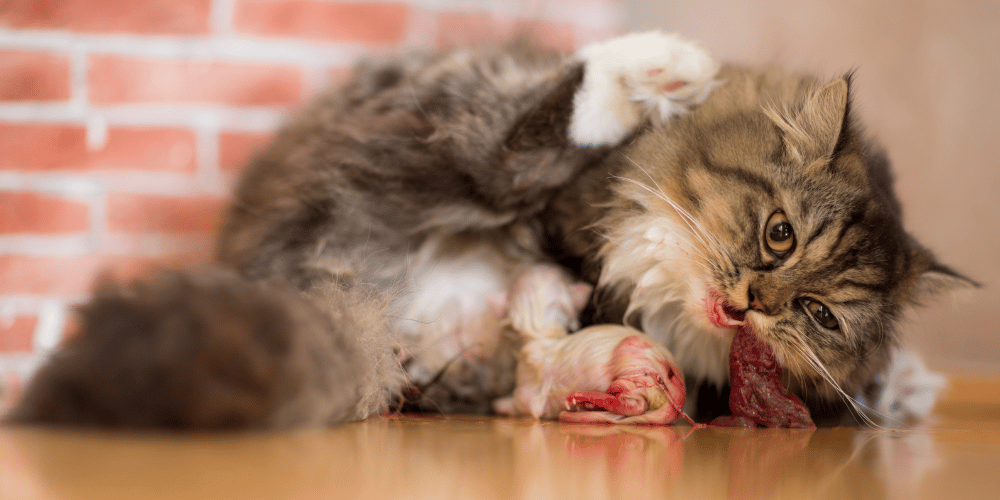
When to call the vet
During delivery, it is important to monitor her birthing process closely. However, in most cases, mother cats will instinctually know what to do. Too much unnecessary involvement can be quite stressful for your cat; nevertheless, there will be occasions when you’ll be required to step in and perhaps call the vet.
Although cats tend to have fewer problems than dogs when it comes to birthing, you should look out for the following problems that will require seeking veterinary attention.
First, you should call your vet if the first stage lasts longer than 24 hours without any signs of straining, and if your cat has been straining for more than 30 minutes without birthing any kittens, it could be due to an obstruction (a very large kitten). If your cat suddenly seems weak, call your vet immediately.
A week before the due date, it is advisable to take your cat to the vet for a final check-up, and you can use this opportunity to ask any questions and potential problems. They will know what is “normal” and when to seek veterinary attention.
Here’s some other podcasts that might be good for you to listen to next:

